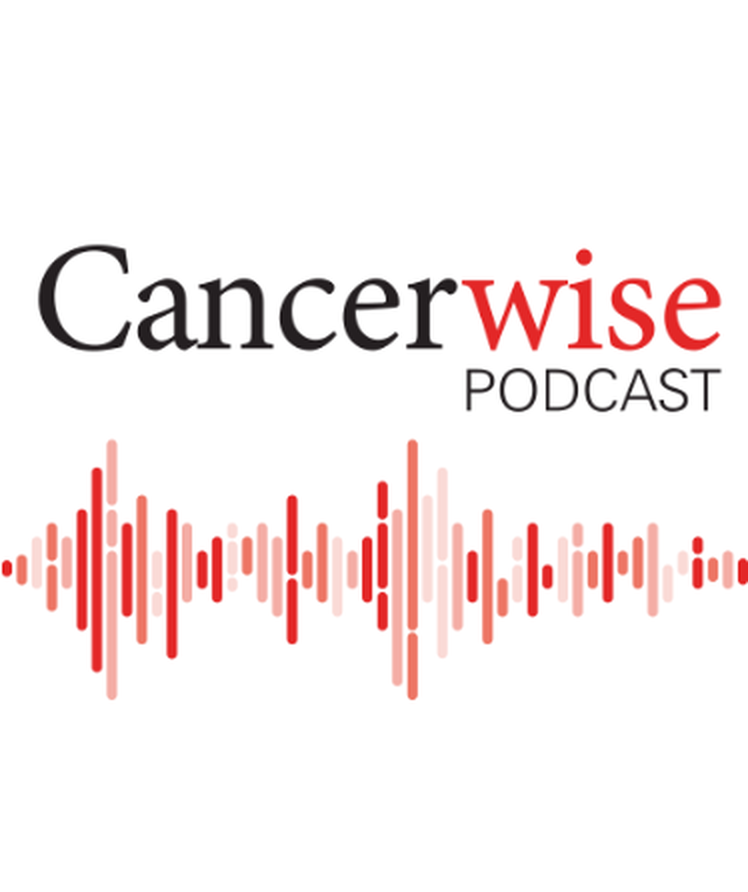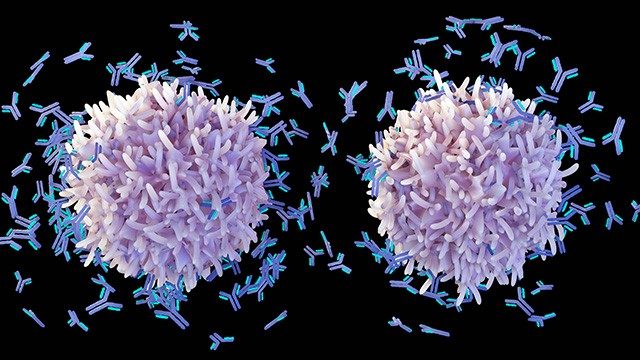Grounded in a culture of collaboration, connectivity and data-based science, MD Anderson's research yields transformative findings that are shifting patient care and improving patients’ lives across the globe. From pioneering cellular therapies to the latest bispecific antibodies and targeted therapies, our work is leading to more personalized diagnoses, treatments and improved outcomes for patients.
At the ASH Annual Meeting and Exposition, our experts showcase their latest research with colleagues from across the globe for large-scale discussion.
Keep up with presentation highlights from our experts as well as learn more about our pioneering research across the field of hematology below.
Featured article
4 notable presentations from ASH 2025
MD Anderson researchers are working diligently to transform our understanding of blood cancers and bring the latest cutting-edge therapies to our patients. At the 2025 American Society of Hematology (ASH) Annual Meeting and Exposition, they are sharing their latest research with colleagues from across the globe.
Here are four of their latest advances that are being presented at ASH 2025.
1. Targeted combinations for patients with Richter transformation
Richter transformation is when chronic lymphocytic leukemia changes into a more aggressive disease, typically diffuse large B-cell lymphoma. When it occurs, patients are usually treated with chemoimmunotherapy regimens such as R-CHOP, but recent clinical trials have reported that targeted therapies, including BTK, PD-1 and BCL2 inhibitors, may be more effective.
To test whether a combination of these therapies might be the most effective, Nitin Jain, M.D., professor of Leukemia, is leading a Phase II trial of a targeted combined therapy of pirtobrutinib (a non-covalent BTK inhibitor), venetoclax (a BCL-2 inhibitor) and obinutuzumab (an anti-CD20 monoclonal antibody) for patients with Richter transformation.
The first results of the trial, which Jain will present at ASH, indicate that this combination therapy resulted in an overall response rate of 67%. Patients in the trial had a 12-month event-free survival of 73% and a 12-month overall survival of 82%.
2. Subcutaneous blinatumomab for B-cell acute lymphoblastic leukemia
Blinatumomab, a bispecific T-cell engager, is an effective treatment for patients with relapsed or refractory B-cell acute lymphoblastic leukemia (B-ALL) when administered as a continuous intravenous infusion over four weeks. However, this drug administration method can be burdensome to patients.
That’s why Elias Jabbour, M.D., professor of Leukemia, and his team are testing whether subcutaneous blinatumomab would also be effective. Results from the preliminary phase of the study, published in The Lancet Hematology earlier this year, indicated that the drug shows promising preliminary activity and a manageable safety profile.
At ASH, Jabbour will present the findings from an additional seven months of follow-up for all patients in the study who received at least one dose of subcutaneous blinatumomab. Of the 79 patients, 77% experienced complete remission or complete remission with partial hematologic recovery within two cycles, and of these, about 75% were living without relapse of the disease at the time of their last follow-up. These findings indicate that the subcutaneous drug maintains durable remissions and overall survival and should continue to be developed.
3. Bispecific T-cell engagers for patients with central nervous system multiple myeloma
Mahmoud Gaballa, M.D., assistant professor of Lymphoma and Myeloma, will also present a study on bispecific T-cell engagers, only this research looked at patients who have multiple myeloma with central nervous system involvement. These patients tend to have a poor prognosis, so better treatments are needed.
In a retrospective study, Gaballa and his team looked at patients treated with teclistamab, talquetamab or elranatamab at 13 different institutions. All of the patients in the study had at least three prior rounds of treatment, including prior transplant and prior CAR T cell therapy. The researchers found that bispecific T-cell engagers are safe, with no increased risk of immune effector cell-associated neurotoxicity syndrome, which is a side effect of T cell engaging immunotherapies.
The study also found that one patient treated with bispecific T-cell engagers as a bridging therapy to CAR T had the longest progression-free survival. Therefore, future research to evaluate this combination’s efficacy in this very high-risk population may be warranted.
4. Targeted combination with evorpacept for patients with B cell non-Hodgkin lymphoma
Paolo Strati, M.D., associate professor of Lymphoma and Myeloma, had led a Phase I study of evorpacept (a novel high-affinity signal regulatory protein that blocks CD47), with lenalidomide and rituximab (R2) in patients with relapsed or refractory indolent B cell non-Hodgkin lymphoma. The combination was safe, and more than 80% of patients had a complete response.
Strati is now presenting a Phase II study investigating the efficacy of this regimen in patients with previously untreated indolent B cell non-Hodgkin lymphoma and a high tumor burden. These included patients with both follicular lymphoma and marginal zone lymphoma.
The results indicated that adding evorpacept to R2 is safe and effective as a frontline non-chemotherapy treatment for indolent B cell non-Hodgkin lymphoma. In the study, 92% of patients experienced a complete response, and 8% had a partial response, for an overall response rate of 100%. With limited follow-up, responses seem durable. The researchers are currently evaluating serial blood samples for circulating tumor DNA to determine the minimal residual disease eradication rate with this novel regimen.
MD Anderson at ASH
These studies are only four of the more than 230 that MD Anderson researchers are presenting at ASH 2025. Together, they represent a wide variety of approaches to treating blood cancers, leading to more personalized diagnoses, better treatments and improved outcomes for patients.
Keep up with the latest research from MD Anderson at ASH 2025.


Featured Podcast:
Why a correct lymphoma diagnosis matters
Lymphoma is a general term for cancers that develop in the lymphatic system, which is part of the body’s immune system. There are dozens of subtypes of lymphoma, and a correct diagnosis is critical. Jason Westin, M.D., and Sairah Ahmed, M.D., discuss what patients should know at diagnosis.
Meet the Experts
Stop by booth 1711 to ask a question, learn about training and career opportunities, continue the conversation on key presentations with our experts, catch up with colleagues or grab a cup of coffee.
Exhibit Hall Hours (all times Eastern)
Saturday, Dec. 6: 11 a.m. to 5 p.m.
Sunday, Dec. 7: 10 a.m. to 5 p.m.
Monday, Dec. 8: 10 a.m. to 2 p.m.
More from our Experts

Institutes at MD Anderson
United by a shared mission to end cancer, MD Anderson clinicians and scientists work seamlessly together to advance groundbreaking research that can transform the field of hematology. Leveraging our unique research ecosystem, including three leading institutes, we are pioneering new prevention, diagnostic and treatment approaches to address the most pressing needs for patients with cancer.
James P. Allison Institute
The James P. Allison Institute is dedicated to advancing exceptional discovery, translational and clinical research to integrate immunobiology across disciplines and unlock the full potential of science and medicine for human health. The institute builds upon the legacy of its namesake, James P. Allison, Ph.D., who was awarded the 2018 Nobel Prize in Physiology or Medicine for his fundamental discoveries in T cell biology and his invention of ipilimumab, the first immune checkpoint inhibitor to treat cancer.
Institute for Cell Therapy Discovery & Innovation
Building upon unparalleled expertise, MD Anderson’s Institute for Cell Therapy Discovery & Innovation is leading the world in developing and advancing impactful cell therapies for patients in need. By uniting the top minds in the field to lead exceptional fundamental, translational and clinical research, we're focused on creating breakthrough off-the-shelf therapies that can be readily adapted for both hematologic and solid tumors as well as devastating auto-immune conditions, infections and other diseases.
Learn more about the Institute for Cell Therapy Discovery & Innovation
Institute for Data Science in Oncology
The Institute for Data Science in Oncology (IDSO) integrates the tremendous power of meaningful data extraction and interpretation with MD Anderson’s unparalleled scientific and clinical expertise to transform research and care to impact patients.
Education and Training at MD Anderson
MD Anderson academic programs are competitive and comprehensive. We offer educational opportunities from undergraduate degrees to graduate medical education opportunities.

